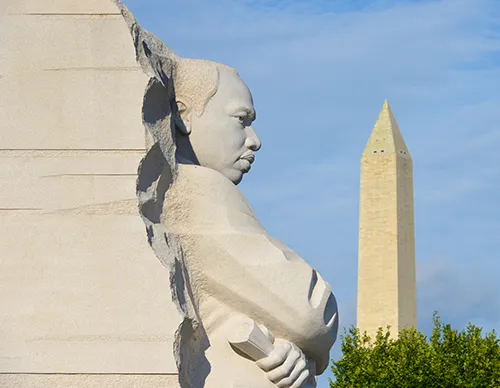 In the ever-evolving landscape of public education, the integration of Black History, Diversity, Equity, and Inclusion (DEI), and effective educational leadership forms a complex but essential framework for fostering an inclusive and equitable learning environment. As educators and leaders, acknowledging the multiplicity of truths within these areas not only enriches the educational experience but also prepares all students for a diverse and interconnected world. This blog post delves into the intersections of these crucial elements and highlights the importance of embracing complexity in educational settings.
In the ever-evolving landscape of public education, the integration of Black History, Diversity, Equity, and Inclusion (DEI), and effective educational leadership forms a complex but essential framework for fostering an inclusive and equitable learning environment. As educators and leaders, acknowledging the multiplicity of truths within these areas not only enriches the educational experience but also prepares all students for a diverse and interconnected world. This blog post delves into the intersections of these crucial elements and highlights the importance of embracing complexity in educational settings.
The Dual Truths of Educational Leadership
Educational leadership plays a pivotal role in shaping school culture, policies, and practices. The first truth we recognize is that leaders must be visionaries, steering their institutions towards inclusive excellence and academic rigor. The second, equally important truth, is that effective leadership requires humility and a willingness to listen and learn from the community it serves. Balancing these truths can be challenging but is necessary for creating environments where all students feel valued and supported.
Teaching Black History: A Dual Perspective
The teaching of Black History in educational curricula is often fraught with challenges, including underrepresentation and misrepresentation. On one hand, Black History must be acknowledged and celebrated for its profound contributions to not just American history, but world history. On the other hand, educators must also confront and teach about the systemic injustices and racism that have been and continue to be a part of our Nation’s shared history. Recognizing these dual aspects allows educators to provide a more comprehensive and honest education, encouraging critical thinking and empathy among students.
DEI: A Double-Edged Sword
Diversity, Equity, and Inclusion initiatives are critical for fostering an environment where every student has the opportunity to succeed regardless of their background. The first truth in DEI work is its potential to bridge gaps, foster understanding, and celebrate diversity within educational spaces. Conversely, the second truth is the resistance and challenges these initiatives often face, from systemic barriers to individual biases. Navigating these dual realities requires resilience and a commitment to continuous improvement and advocacy.
Embracing Complexity: “Two Things Can Be True”
At the heart of educational leadership, teaching Black History, and DEI efforts is the principle that “two things can be true.” This concept is vital in education as it encourages the acceptance of complexity and nuance in discussions about history, identity, and equity. For instance, one can celebrate the progress made in civil rights while also acknowledging the ongoing struggles against racial inequality. By embracing this mindset, educators and leaders can foster a more nuanced understanding of the world among students, preparing them to navigate and contribute to a diverse society.
Moving Forward
The journey towards integrating Black History, DEI, and effective educational leadership is ongoing and complex. It requires a commitment to understanding the multiple truths within these areas and a willingness to confront uncomfortable realities. By doing so, educators and leaders can create more inclusive, equitable, and honest educational environments. Ultimately, embracing the interconnectedness and complexity of these elements can lead to a more just and understanding world.
As we navigate these intersections and Black History Month, let us remember the power of education to change lives and societies. By committing to these principles, we can work collectively towards an educational system that truly reflects the diversity and richness of mutual life experiences.
